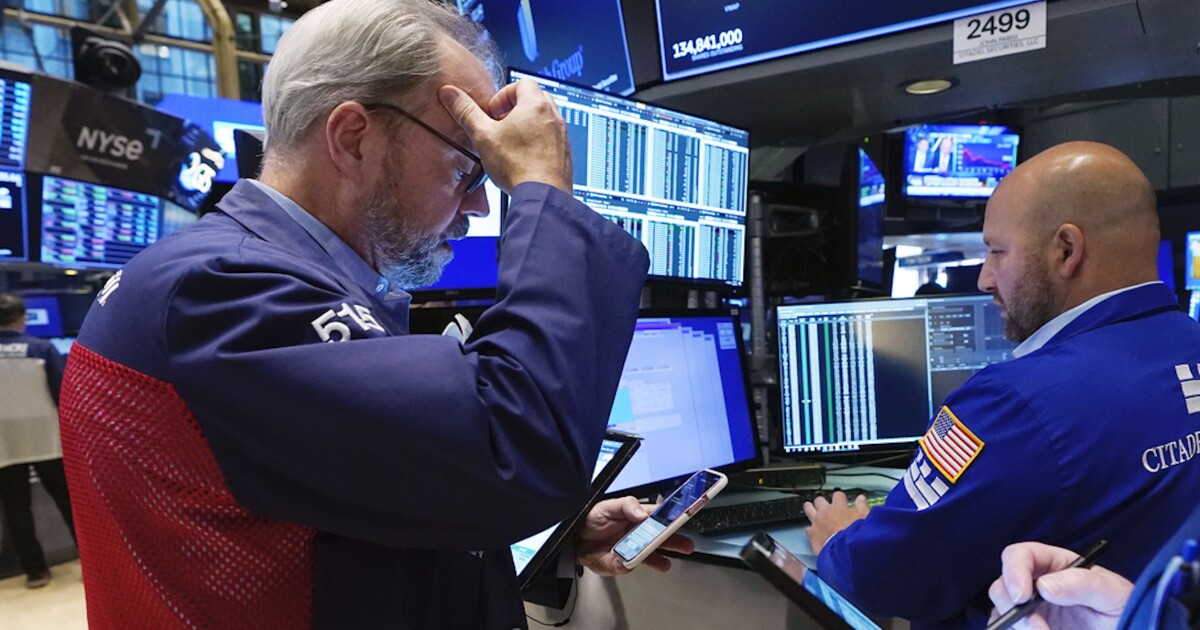

Treasury yields have risen in the lead-up to the Federal Reserve’s next interest rate decision this week, with the 10-year yield hitting its highest level in more than a decade.
Benchmark 10-year Treasury yields were sitting at 4.34% on Tuesday, the highest they have been since 2007. Meanwhile, the benchmark two-year Treasury yield was at 5.08%, the highest it has been since 2006, although it was briefly a bit higher in March.
HERE ARE THE HOUSE REPUBLICANS WHO HAVE PLEDGED TO VOTE NO ON STOPGAP SPENDING MEASURE
The yields are also inverted, meaning that the shorter-term yields are higher than longer-term yields. Yield curve inversions can portend recessions and can show investors have little faith in growth picking up in the coming years.
The higher yields come a day before the Fed makes its next decision on interest rates. The consensus is that the central bank will hold its rate target steady on Wednesday at 5.25% to 5.50%, although recent inflation reports have made it likely that it will have to hold a restrictive stance for longer, which likely, in part, is factoring into the higher yields, according to Greg McBride, chief financial analyst at Bankrate.
“The economy has been running stronger than had been expected by this point, which is a nice problem to have if you’re anyone other than the Federal Reserve,” McBride told the Washington Examiner. “But for a Fed who is trying to reduce demand to get inflation under control, that just means they’re going to have to keep rates at a high level for a longer period of time.”
“The Fed doesn’t have to raise rates for policy to get tighter. They can continue to hold rates steady as inflation declines, and that has the same effect,” he added.
The Fed is also tightening money by shrinking its balance sheet. Its assets have shrunk from nearly $9 trillion earlier this year to closer to $8 trillion.
Recent inflation readings show a pop in prices over the past couple of months, with the consumer price index rising to 3.7% in August from a low of 3% in June. That has made investors think that the Fed will likely wait even longer to start lowering rates or might even prompt another rate hike before the year is up.
Stocks are also largely down this week, buoying the notion that investors are a bit fearful about the country’s economic outlook.
McBride said that the downgrade of the U.S. by Fitch early last month from AAA to AA+ is likely having an effect on the longer end of the curve.
Another key factor involved is higher oil and gas prices. Prices have been up this summer and were the single biggest contributor to the inflation jump last month. Higher energy prices can further contribute to inflation through transportation and production costs.
The Federal Open Market Committee is meeting on Tuesday and Wednesday and will announce its decision on rates following the gathering in Washington, D.C.
CLICK HERE TO READ MORE FROM THE WASHINGTON EXAMINER
An overwhelming 99% of investors anticipate that the Fed will not hike rates again at this meeting, according to the CME Group’s FedWatch tool, which calculates the probability using futures contract prices for rates in the short-term market targeted by the Fed.
The Fed’s next meeting is set for Nov. 1, and about 71% of investors expect the central bank to hold off on hiking once again. But by the end of the year, about 40% believe rates will be increased at least once.





